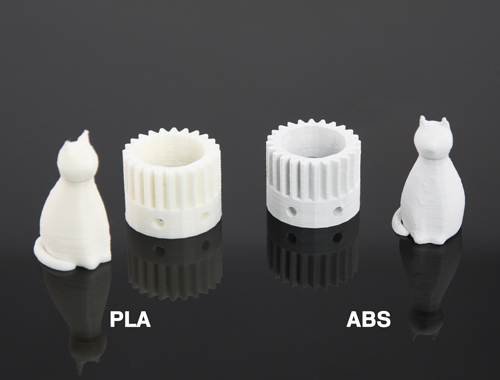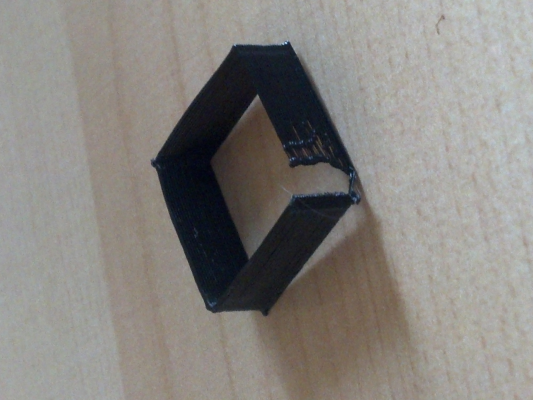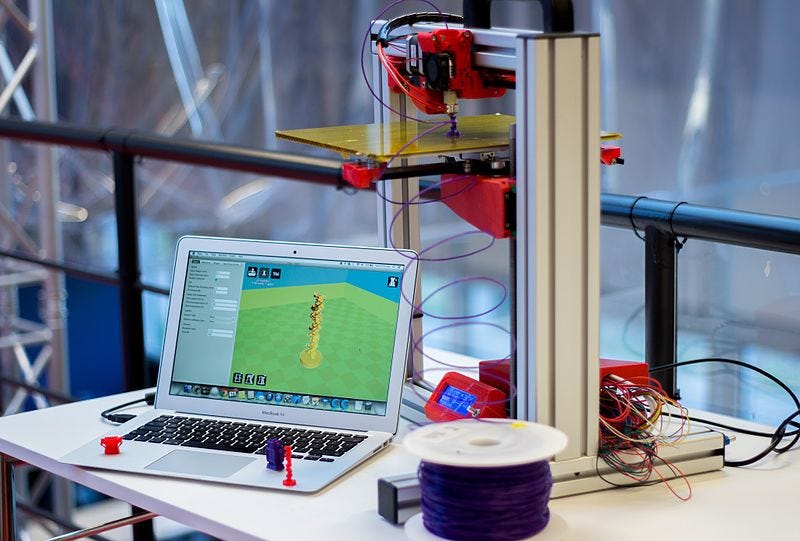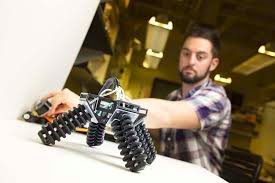3D printing Misconceptions: Top 9 myths surrounding 3D printing
Dec 4, 2021

3D printing has been prevalent since the 1980s. Yet this technology has often been misrepresented — both favorably and adversely. A balance exists between knowing the capabilities and shortcomings of any current technology.
People who are misled about new technology frequently avoid it or utilize it poorly. 3D printing has reached a tipping point in recent years. For decades, 3D printing has been an essential prototype tool. But it is now rapidly becoming a feasible alternative for production applications.
Having said that, there are still many misconceptions regarding the technology. The goal of this article is to examine some of the most frequently held ideas about 3D printing. We will also debunk the myths that underpin them. In the article, the following sub-topics relating to misconceptions about 3D printing will be discussed —
- 3D printing is a new technology
- ABS is superior to PLA
- Anything you can think of can be printed in 3D
- High-volume manufacturing will be outpaced by 3D printers
- 3D printing is only useful for creating prototypes
- The cost of 3D printers is prohibitively high
- 3D printing demands an excessive amount of investment
- 3D printing is slow to be viable for mass manufacturing
- 3D printers are tough to use
- 3D printing can only make plastic components, it cannot compete with metal
Let’s look at each misconception
1. 3D printing is a new technology
3D printing is not as new as you may think! 3D printing first appeared in the 1980s. The invention of 3D printing may be traced back to the late 1970s. Dr. Hideo Kodama receives the credit for producing the first inkjet printer.
As time passed and proprietary patents expired, advancements in 3D printing sped up. And they will continue to do so for the foreseeable future. 3D printers are becoming cheaper, and the precision is improving with each attempt.
Attempts at 3D printing objects took off in the 80s. Chuck Hull’s 3D printed eyewash cup was the first 3D printed object. In the late 90s 3D printing impacted major developments in various industries. One such feat was the creation of a human bladder. This was done by the Wake Forest Institute for Regenerative Medicine. In 2005, the world realised the commercial applications of 3D printers. We have Adrian Bowyer’s RepRap project to thank for that! It was an-open source ingenious initiative. Adrian Bowyer built a 3D printer that could in turn build other parts of itself. From there, this technology only went uphill.
3D printing Is Going To Be Way Bigger Than What The 3D Printing Companies Are Saying.
– Credit Suisse (Investment Banking Company)
2. ABS is superior to PLA

These are the two most popular 3D printing filaments — ABS and PLA. Most hobby and prototype level prints are done with these two materials. Although ABS is believed to be superior, there are properties of PLA that make it attractive as well —
- PLA filament is popular because of its simplicity of usage and cheap cost. As it does not depend on petroleum, it may be produced at a considerably cheaper cost. This lowers consumer costs while decreasing PLA’s environmental impact.
- The glass transition temperature of PLA is very low. This is the temperature at which the filament becomes ductile. In the case of PLA, this is approximately 65°. This material does not need nearly as much heat or electricity to print with. (However, PLA is not ideal for printing anything that must resist heat for an extended length of time.)
- PLA is also more pleasing to the nose. The sugar-based substance has a somewhat sweet aroma when heated. ABS has a harsher odour in comparison to it. When used, ABS also requires ventilation since the fumes may be unpleasant.
- It can print tough or complicated features. This material is frequently used for prototyping and architectural mockups.
- ABS filament as compared to PLA filament is a little more technical. It may be more difficult in terms of print settings, and so on. Hence, ABS printing is challenging for hobbyist printers. But it is the ideal material for professional purposes.
ABS is often used in end-user tools, moving components. It’s also used in parts that must resist severe mechanical stress.
The characteristics of PLA make it suitable for various applications. Some of them include plastic films, bottles, and biodegradable medical devices.
You can check out a print comparison between PLA and ABS in following videohttps://fabheads.com/media/d616d4c2108318d25ddec0340de1a8d4
3. Anything you can think of can be 3D printed
Every technology is accompanied by some underlying technical constraints. 3D printing is not indifferent to this. Understanding these constraints in-depth will help you make the most of this technology.
3D printing is already shaking our age-old notions of what can and can’t be made.
– Hod Lipson (Director of Columbia University’s Creative Machines Lab.)
It can work wonders in terms of speeding up design development. It even offers new production possibilities. But, in the end, it’s simply another tool in the toolbox, each with its own set of limits and uses. Some of its limitations are the availability of materials, sizes, and strength. Some examples, which you might have heard another version of, are —
- Some forms and component geometries are not readily 3D printed. E.g. You can fabricate parts with a fraction of a millimeter thin metal. Still, 3D printed parts need to have a minimum wall thickness to be stable in use. Also, parts that need strength in through-thickness direction are not best 3D printed. This refers to the direction perpendicular to the printed layers.
- AM isn’t suitable for parts with specific dimensional precision and/or surface finish. Or they may need another operation post 3D printing
- Example — Guns — The odds of creating a fully functional accurate 3D printed gun are very slim. The heat and pressure would make it almost difficult for the weapon to work correctly. Plus the precision required in the gun body for an accurate shot would be difficult to achieve without a post-processing operation
- Example —Thin, long cylindrical object — 3D printers often have limited Z (vertical) motion. Hence the height that can be printed is limited. If you try to print the cylinder in horizontal configuration, the circular profile of the cylinder will have a stepped perimeter, because of the layers’ finite thickness.

4. High-volume manufacturing will be outpaced by 3D printers
3D printers are able to produce components cheaply and rapidly for low-volume items. For products that need quick design iterations or custom features, 3D printing is much better. There are many who claim that 3D printing is replacing high-volume manufacturing. This isn’t entirely true, yet.
The cost of manufacturing AM parts will decrease in the future years. But it will still remain an expensive alternative for large-scale production. This will particularly be the case for low-value goods.
Mass manufacturing processes have been perfected for decades. Thus 3D printing currently cannot compete with methods like injection molding or casting. Some 3D printing firms are making printers capable of manufacturing high-volume components. These will most likely complement current processes rather than substituting them.
With a 3D printer, you can quickly develop ideas at a low cost. It reduces the cycle time for iterative design, allows flexibility in design and allows you to fabricate complex designs as well. Traditional methods may also be capital intensive in beginning. This makes 3D printers ideal for low-volume, custom-made prototypes, tooling, and fixtures.
5. 3D printing is only useful for creating prototypes
3D printers are predominantly perceived as a prototyping tool. This pre-conception may, in some cases, prevent widespread adoption of the technology. This also hinders opportunities to take advantage of the transformative capabilities it provides.
3D printing can achieve significant improvements in both time and cost-effectiveness. This is more suitable than conventional manufacturing techniques associated with contemporary industrial applications. 3D printing can generate objects from the initial concept. Yet, it faces the same design limitations as manual fabrication or CNC machining.
In traditional methods, each physical prototype required a new design to be created and outsourced to a manufacturer. They would then produce it using subtractive (e.g., milling) or additive (e.g., casting/molding) manufacturing methods. Tooling and logistics are involved in every transaction. Hence this may result in long delays and expenses.
3D printing expedites this process. It eliminates the need for equipment. It also allows you to take your concept from the design file to the real world faster. This reduces wait times since input can be instantly translated into an updated design file. This can then be 3D printed in as little as a few hours.
True, Fused Deposition Modeling (FDM) is suited mostly for rapid prototyping. Yet, organizations are employing 3D printers to create tools, jigs, and fixtures for precise or generalizable use. This is seen in the bottling plant of Heineken or on the assembly lines of Volkswagen Autoeuropa. Companies are even printing end-use parts in small and large batches. This allows them to prevent the high costs and long lead times.https://fabheads.com/media/65380c5e1de8d145e7d100b6d4e9200d3D printing technology has been in use at Heineken’s Seville plant for about a year [Courtesy: https://www.3dprintingmedia.network]
Businesses must examine their whole manufacturing strategy. This will help them understand how 3D printing may encourage innovation and add value to overall operations.
6. The cost of 3D printers is prohibitively high
Many people have avoided 3D printing because they think it is too expensive. Of course, when Chuck Hull invented the SLA Printer roughly in 1987. Back then it would cost you something in the region of $300k to buy one. However, things have altered through time.
Even until 5 to 7 years ago, the approximate cost of a 3D printer was hovering around the $50k level. 3D printers have lately acquired tremendous popularity globally. The output of 3D printers has grown by several times owing to the growth in demand globally. Now you can now buy a decent 3D printer for a significantly cheaper cost.
There are usually three kinds of 3D printing. They are better known as SLS (Selective Laser Sintering), SLA (Stereolithography), and FDM (Fused Deposition Modeling). Out of the three, FDM 3D printers are the cheapest, while the SLS 3D printer is the most costly. You can buy a good FDM printer for hobby use for as low as $200.

The value of the 3D printer varies on the technology utilized. If the 3D printer is of the latest technology, or prints with a high precision, then the cost of the printer will increase.
7. 3D printing demands an excessive amount of investment

Jonathan Juursema Licensed under CC BY-SA 3.0]
The 3D printing market’s worth grew on average 25 percent each year during the past five years. This increasing worth created a surge of interest in starting up a 3D printing business. The 3D printing sector provides various areas in which to establish an enterprise.
The actual cost of establishing a 3D printing company depends on the kind of emphasis you select. However, the cost of starting up a 3D printing company can be as low as $1,000 . This cost will be influenced by the kind of 3D printer that you select, according to the marketing, software, and utilities. The cost of a 3D printer varies depending on the size, capabilities, and quality that you want to create.
A 3D printer itself is not a significant financial investment. When competing with alternative production options, it often needs the smallest initial investment. However, you must be cautious not to buy in unreliable technology. Or buy closed ecosystems that tie you into expensive consumables and service contracts.
Select the most appropriate hardware, software, and materials for your application. This way you’ll be able to optimize your return on investment, with a possible payback time of just a few months
8. 3D printing is slow to be viable for mass manufacturing
There has been rapid advancement in 3D printing technology, parts, and components. This has resulted in the prices being pushed down. Thus it has become a more viable choice for widespread manufacturing usage.

Moving to 3D printing will allow businesses to pursue short-run component production. Here dedicated product teams may introduce new products more often. They will be able to work even beyond the boundaries of their imagination. And they’ll definitely work beyond the limitations that come with conventional techniques. 3D printing offers an agile development approach for physical components. It has the potential to expedite the manufacturing and the time it takes to come to market.
There is no question that 3D printing is far ahead of traditional techniques when it comes to producing the first few hundred components. It is much faster when compared to other manufacturing methods. Thus, if time is the most important factor, industries opt for 3D printing for small-batch production.
9. 3D printers are difficult to use
This is becoming less true day by day. Previously, 3D printers were difficult to use. Many contemporary 3D printers used unintuitive software to manufacture. This requires professional expertise. Whereas previous versions of hobby-level 3D printers were created without software. Hence, in order to produce a viable component, these machines require significant operator knowledge in areas such as part design, part alignment, and machine parameters.
At present companies that manufacture 3D printers are Original Prusa i3 MK3S, Dremel DigiLab 3D45, Elegoo Mars 2, and others. They increasingly provide integrated purpose-built hardware, software, and materials. This results in predictable machine efficiency and reduced need for human skill. Operating 3D printing is no complex than operating CAD software. You’ll need to generate a 3D model of the part. The availability of 3D printing software implies that engineers and machinists may spend more time developing excellent components. Hence they’ll spend less time learning how to operate the software and printer.
10. 3D printing can only make plastic components, it cannot compete with metal
Some people still believe that 3D printing can work only with plastic as it involves melting the material and deposition. As a matter of fact, metal 3D printing is almost as widespread as plastic 3D printing. Metal 3D printing is specifically popular in sectors where superior strength and precision components are required. E.g. Aerospace, aviation, defense sectors etc. Though metal 3D printing consumes more energy, the parts created can compete with, and often beat, products made by traditional methods.
A very popular example of this is Relativity Space. They are making complete rocket structures using 3D printing. 95% of their rocket’s parts are made with 3D printing, thus bringing down the total rocket fabrication time down to a staggering 60 days.

Conclusion
The technology has been available for quite some time. Yet some people continue to underestimate the possibilities of 3D printing.
To some extent, the area has been a sufferer of its own achievement. This has resulted in many misconceptions about the area. Some of these are even proving harmful to the future spread of AM across the globe.
The popularity of additive manufacturing is increasing. Hence more resources are becoming available for further development and refinement of the technique. This will result in machines that are quicker, more repeatable, and less expensive.
The speed and flexibility that 3D printing enables is a useful tool that can facilitate first-to-market opportunities and validation of larger production demand.
Carl Dekker (President of Met-L-Flo Inc. )
Those who are unfamiliar with AM’s reality are preventing it from gaining broader acceptance and implementation. Knowing what works and what doesn’t, as well as distinguishing truth from fiction, may assist organizations in making the best choices possible.
Over the next decade, rapid, more durable 3D printing that generates consistent, the high-quality output would enable potential production on a level with traditional techniques like casting and injection molding, allowing for more competitive pricing.
How do you feel about these misconceptions about 3D printing in the manufacturing industry?
Please let us know in the comment section below!